|

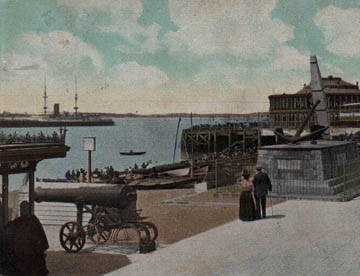 CRIMEAN CANNONS - WHERE ARE THEY NOW?
CRIMEAN CANNONS - WHERE ARE THEY NOW?
Clarence Esplanade and Pier
Southsea
Hampshire
Great Britain
The pier and esplanade really date from 1861 when the pier formally opened. Construction of the pier had commenced in 1860. From 1866, a line of the Landport & Southsea Tramway ran right to the pier. The Prince of Wales (later King Edward VII) opened the pavilion in August 1882. Thereafter the pier steadily developed to accommodate more ship passengers and general tourists and holidaymakers.
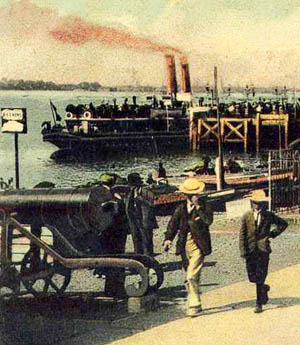
The following gives a clue as to the amount of reshuffling the monuments at Southsea have undergone:
"Reminiscences of a Municipal Engineer", H. Percy Boulnois, Borough Engineer of Portsmouth, 1883 - "Amongst other improvements which I carried out along the seafront was the re-arrangement of the various monuments, trophies etc., which had previously been more or less scattered along the beach. Amongst them was discovered the large anchor of the Victory, and I designed and erected a granite base on which the anchor was placed".
Bombing damaged the pier in 1941 but restoration commenced in the 1950s after the war. Today it is a popular tourist spot with many seaside attractions for holidaymakers.
Postcards of circa 1900 show Crimean Cannon located on the Esplanade near the HMS Victory Anchor Monument. The nearby war memorial monument survives unlike the cannon(s). The memorial is a tapering granite pier with polished granite panels. The wording is very weathered. It is surmounted by a bronze trophy, the metal from a gun captured at Lucknow, The memorial rests on a stepped plinth with cannon bollards at the four corners. Earlier pictures show more than 4 cannon bollards and a further cannon alongside the afore mentioned Crimean Cannon. In the picture below which dates from about 1880, before the anchor monument was erected, two Crimean Cannons are clearly visible plus a mortar bottom left.
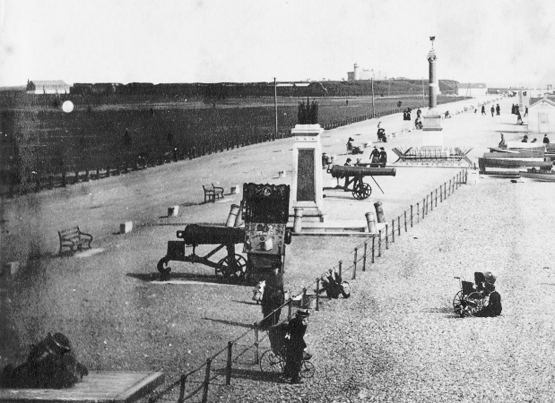
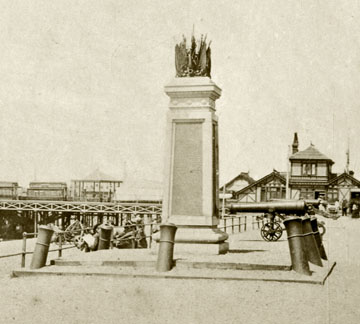
We are grateful to Peter Langmaid for assistance with the above and Jane Smith for the information below.
Back in 2002, Jane Smith published a book entitled, “The Story of Hilsea: Gateway to Portsmouth”. Now out of print copies can be obtained via the internet. Here’s what Jane wrote about the cannon, in connection with the Bastion Road House built in 1938 (p.77):-
“The cannon were a pair which had a most interesting history. According to correspondence in The News in 1956, the cannon were two of several presented to the City of Portsmouth in 1855 after the victory at Sebastopol in the Crimean War. They were then placed on Clarence Parade where they remained until the 1920s when they were removed to a corporation yard.
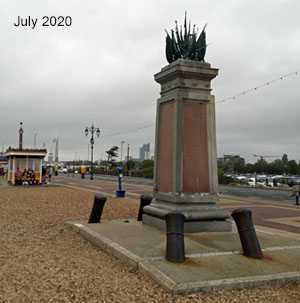 In 1937 they were sold to the Bastion Road House and put on display outside. For nearly twenty years they were a landmark at Portsbridge. In 1956 they were sold as part of a massive auction of cafeteria equipment and other effects when the Road House closed and became a garage Their location is now unknown. The Bastion Road House building was demolished in the 1980s.”
In 1937 they were sold to the Bastion Road House and put on display outside. For nearly twenty years they were a landmark at Portsbridge. In 1956 they were sold as part of a massive auction of cafeteria equipment and other effects when the Road House closed and became a garage Their location is now unknown. The Bastion Road House building was demolished in the 1980s.”
A few years after Jane's book was published, she was contacted by a man who reckoned he had seen them in a local scrap yard but she didn’t investigate further.
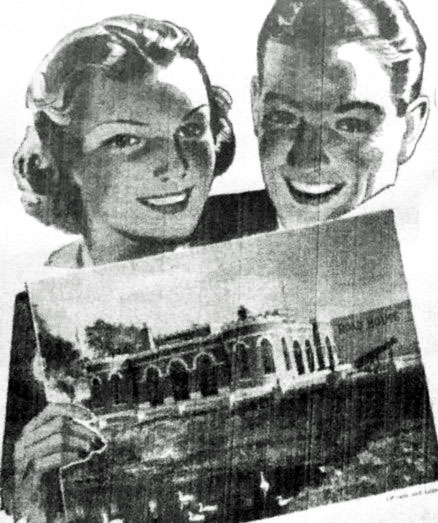
The Bastion Road House on opening. A Crimean cannon can just be seen on the right hand side. It was apparently painted white at some time, making it very noticeable.
ADDITIONAL INFORMATION

FACILITIES
Access all Year, Access on Foot, Disabled Access, Free Entry, Restaurant/Food, Retail Souvenir Shop, Toilets, Tourism Information
LANDSCAPE
Coastal
REGION
England - Southern
THE FEATURES PRESENT
Crimean Cannon Location, past or present
|









